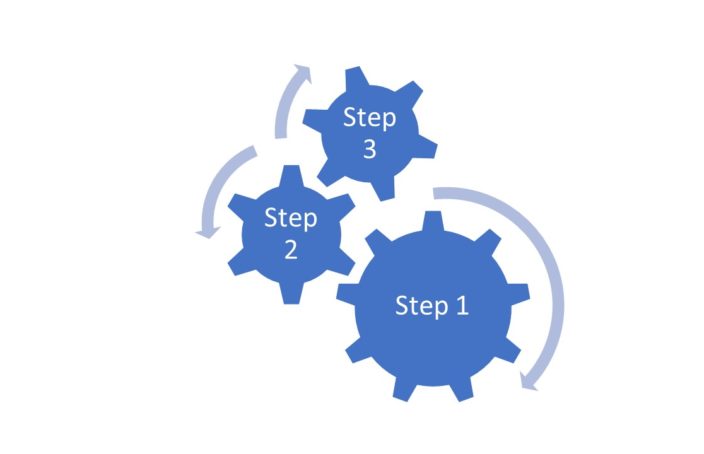Starting A Small Business and Making Workflows Automatic
Welcome back to our series on Starting a Small Business. If you have missed our earlier blog instalments, you might want to check on these:-
Starting a Small Business – Make Sure You Know Why
Starting a Small Business – What To Think About
Starting a Small Business – How Do I Start?
Starting a Small Business – With A Feasibility Check
Starting a Small Business – With a Plan
Starting a Small Business – Hiring Your First Employees
This week, we are going to look at how you can make some of your important workflows automatic so that you can boost efficiency in your startup.
Why should you make workflows automatic?
It may not seem so obvious as you start your small business because you are doing everything and you know what to do. In fact, you may have got into “the groove” so that your brain goes into neutral as you work through the usual steps in anything you do.
Let’s say one of your standard workflows is to check stock levels every Friday, make a note of what you need to order, and make the order – you automatically check stock levels every Friday afternoon at three; you have a sheet with lines drawn up so that you can make notes about stock levels and find what you are looking for; you know where to look for supplier telephone numbers and who to speak to when you call; you know what confirmations to ask for and remember to check when they will ship.
It is automatic.
To you.
But you will grow your business and you will hire staff one day. At that time, you will need to show them what to do – you can’t just say “Hey you, check the stock and make the order.”
If you did that, they would take twice as long, miss the order window, count the wrong shelves and totally miss the back room, call the wrong supplier.
It could be a nightmare.
Worse, after a while, they would invest their own process so that if they are off sick and you try to pick it up again, you wouldn’t be able to tell what records they kept or where to find their last orders.
And even worse, as your business grows you will hire more people, and they will each have their own ways of checking stock and making orders. When they go on holiday nobody else will know what to do. The results will be different every time somebody different does the workflow process. When Sam does it, he will consistently order 20% more than you need. When Jill does it, she will constantly forget that the widgets are counted in boxes, not individually. When Bill does it, he will always order from the most expensive supplier because they deliver faster.
Chaos and inefficient.
The best way to run an efficient business is to make sure that you have a set way of performing core business tasks in a consistent and measurable way. Having a set of written procedures for each core workflow will: –
- allow you to pass on instructions easily and consistently
- allow new people to be trained quickly
- allow temporary staff to fill in for people on holiday or off sick
- ensure a consistent result so that you get the same thing no matter who is doing it
- provide consistency to your customers
- create the ability to automate with computers
- allow you to scale as you get bigger
- allow you to measure people’s performance against a standard
- allow you to be absent from the business and take a holiday!
When should I start recording my workflow processes?
There is no better time than when you are starting – when you are working on your own, or when you only have one or two people working with you.
At this time, you can experiment and find the best way of doing things without making everyone confused. You can try out different procedures and choose the ones to standardise through day-to-day experience.
Once you are clear about the best way of doing something, you can write it out and then test by following your own instructions to see if they are easy to follow and if they make sense. Then, when you start to hire people, you can simply show them the procedures and be assured that they work.
What workflows should you make automatic?
In short, every workflow, because you want your whole business to be consistent, scalable, and efficient.
However, if you are just starting your business, we do not want you to be overwhelmed with creating procedures for every task in your business because we need you to focus on starting and growing the business.
At a later time, when your business is more established, you can then “fill in the gaps” and make sure that you have a set of standard operating procedures for every task in your business from opening the doors to keeping the records, to making the products or services, to answering the telephone (with a standard script!).
For now, focus on a few core business processes.
Think about the core processes that you need to get right and efficient so that you can implement your business plan and work toward your vision for your business without getting caught up to get it right every day.
These are some of the workflows you might consider:-
- Production – what you do to make your product or to provide your service
- Record-keeping – invoicing, purchasing, bookkeeping, filing, wages payments, tax obligations
- Sales and Marketing – marketing initiatives, sales processes and contact, customer relationship communications, post-sales service
- Purchasing and stocks – stock levels, ordering, security
- Mail and telephone communications – incoming mail, distribution, responsiveness, incoming telephone calls, message taking
In your business, you might want to break some of the above into sub-processes if that is more effective for you.
The idea is to pick the workflows that are key to providing the best customer service and that has a big effect on your business if you get it wrong or is inefficient.
How do you make it automatic?
Once you have a list of processes that you need standard operating procedures for work on each of them in turn. Start with the one that has the most effect on the business, or that is most urgent, perhaps because you are about to hire someone to do it.
Keep a notepad with you through the day, and as you work through the process, write down your steps as you do them. You should end up with a list of numbered steps that you can “audit” to make sure that you are doing it in the most efficient way.
The next day, try to ignore what you would normally do and follow the steps that you wrote down, to see if they are logical, correct and efficient. Ask yourself as you follow the steps: “Can I do this any better or faster?” Make changes if you have to and test them the next day.
Once you are happy that you have recorded the best steps to complete the task, write down what you expect the task to look like at the end.
For example, if it is how you make orders for supplies, you might write that “At the end of this process, an order for the correct amount under the procedure should have been made by 5 PM on Friday and confirmed by email”.
Or, if it is about ensuring mail is answered the next day you could write: “At the end of the process, there should be no emails in the inbox and all should have been replied to.”
Keep all these procedures in a file that is easily available during the workday.
In this way, not only have you recorded how to do something, but also what you expect the task to look like when complete. When you hand this responsibility to someone else, you can then measure their performance against a standard that is objective and known. If emails are building up and have not been replied to by the end of the week, they are not doing their job.
As you work in your business, you need to take the responsibility of following your own procedures. If you feel that from time to time they need to be updated, then update them in writing. As soon as you start employing people you need to not only talk the walk, you have to walk the talk and be seen to be following the procedures rather than “doing it from memory”. You need to be seen to be ready to change the procedures properly rather than ignoring them as you “found a better way”.
As you start to employ new people, introduce them to the procedures as the way to do their tasks. Make sure that for the first few weeks you are checking on them as they work to see that they are following the procedures. Reward them for doing so and be prepared to counsel them if they are not. Your task is to make sure that the culture of following procedures becomes the culture of your business.
And in the future?
As you grow, you can continue to write procedures for more and more workflows.
Choose the next most important task and do exactly the same as above.
Try to grow your collection of standard operating procedures into a connected set of business procedures, collecting them into a manual of operations.
Having a manual of operations can make your business more valuable than just the physical things it owns. Buyers look for a well managed and organised business that they can step into. If you can show buyers that they will buy into a business where everything is organised and where they only need to turn the key to operate, you can charge a premium for the business.
Take these simple steps now before the business is full of people wanting to do things their way.
Taking these steps now will allow you to focus on strategic things to grow your business rather than get pulled in to show Jimmy how to operate the coffee machine every day.
So, that’s it. Make sure you start as efficiently as you can get by making core workflows automatic.
This is the last article on starting your small business. Next week we are going to start a series of articles about growing your business. You don’t want to miss it as we will tackle every stage of how to grow your business. In fact, you should go to this link so that you can get the blog posts delivered directly to your inbox and you can then read them at your leisure.
Now, take an hour or so and write down that list of key workflows that will have a big impact on your business.
Go do it and we’ll meet again next week!





No comments yet.
Add your comment